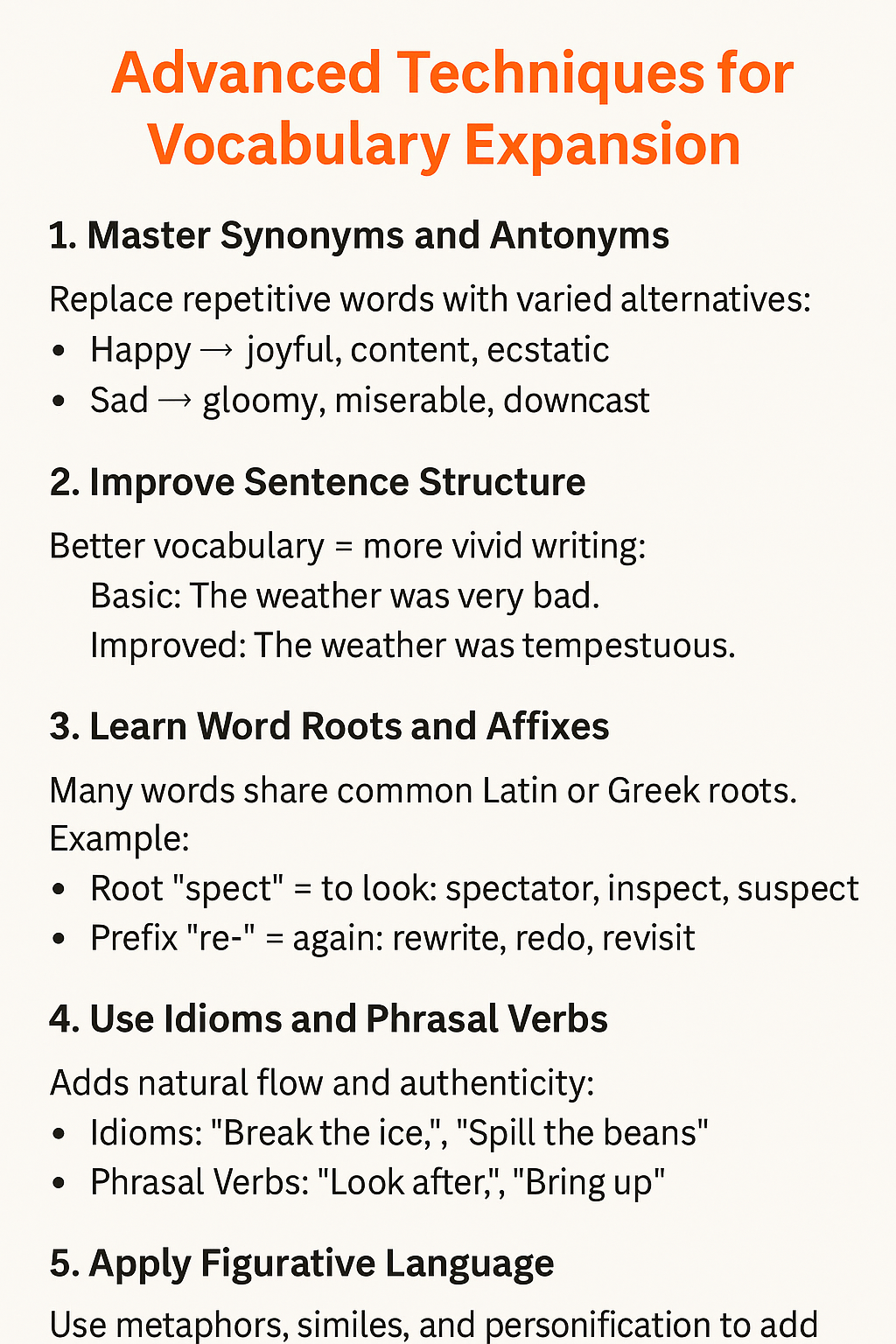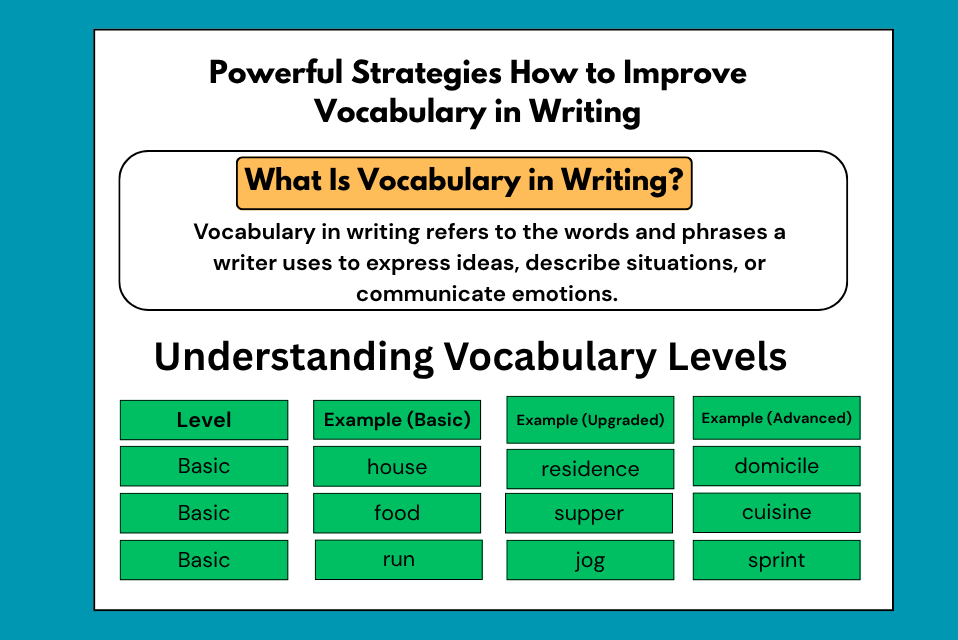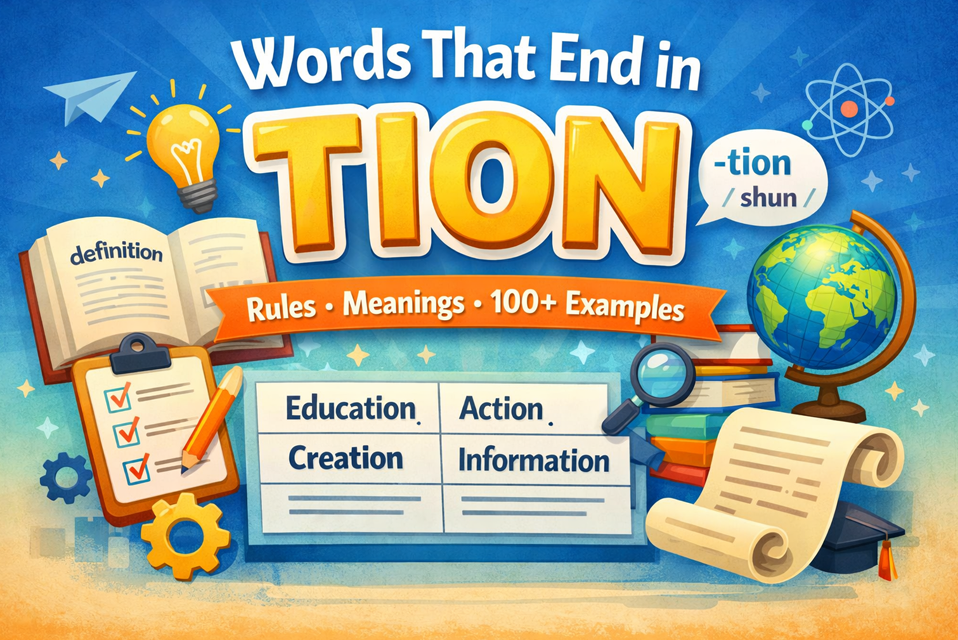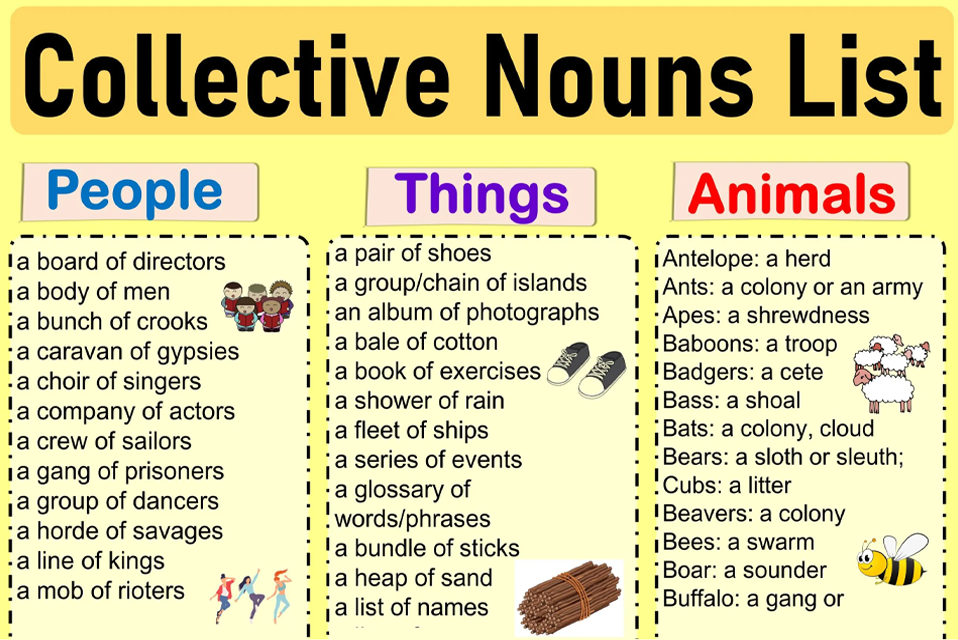When it comes to writing, vocabulary is the foundation of expression. The right words can bring your ideas to life, adding depth and precision to your communication. Whether you’re crafting a formal essay, a business report, or a creative story, a rich and diverse vocabulary allows you to convey your message clearly and effectively.
To improve vocabulary in writing, you need more than just memorizing new words. It requires consistent effort, practice, and a willingness to engage with the language in different ways. Enhancing your word choice helps you write with greater clarity, tone, and impact.
What Is Vocabulary in Writing?
Vocabulary in writing refers to the words and phrases a writer uses to express ideas, describe situations, or communicate emotions. It involves both the selection of specific words and the ability to use them correctly and creatively within the context of a sentence or paragraph.
A broad and varied vocabulary allows a writer to:
- Avoid redundancy
- Make their writing more engaging
- Accurately express complex thoughts or emotions
- Improve clarity and precision
Why Vocabulary Matters in Writing
A strong vocabulary serves as the writer’s toolkit. It allows you to choose the perfect word for every situation, making your writing more effective. By using varied vocabulary, you can engage your reader’s attention and make your writing both informative and enjoyable.
To truly hold your reader’s attention, your vocabulary needs to be clear, expressive, and dynamic. Learning how to improve vocabulary in writing can help make your content more engaging and impactful.
Key Benefits:
- Clarity: The right word makes your meaning clear. For example, using “dazzling” instead of “bright” provides a more vivid image.
- Engagement: A diverse vocabulary prevents monotony.
- Precision: The more words you know, the more accurately you can describe exactly what you mean.
- Nuance: Different words can capture subtle distinctions in emotion, thought, or context.
Understanding Vocabulary Levels
Before diving into strategies, it’s helpful to recognize different vocabulary tiers:
| Level | Example (Basic) | Example (Upgraded) | Example (Advanced) |
| Basic | house | residence | domicile |
| Basic | food | supper | cuisine |
| Basic | run | jog | sprint |
Balancing vocabulary complexity with readability is key. Overusing advanced vocabulary can confuse or alienate your audience.
Strategies for Improving Vocabulary in Writing
1. Read Regularly
Reading expands your exposure to new vocabulary. Read:
- Books (novels, biographies, non-fiction)
- Newspapers and magazines
- Blogs and academic articles
Tip: Keep a reading journal. Note unfamiliar words, look them up, and try using them in sentences.
2. Use a Dictionary and Thesaurus
- Use a dictionary to understand definitions, pronunciation and usage.
- Use a thesaurus for finding synonyms and antonyms.
Caution: Not all synonyms are interchangeable. Always consider context.
3. Learn Words in Context
Instead of isolated word lists, learn words in phrases or sentences:
“She was ecstatic about the news.” “He was overjoyed to see his old friends.”
Context helps reinforce meaning and usage.
4. Keep a Vocabulary Journal
Track new words and phrases you encounter:
- Definition
- Example sentence
- Synonyms/related terms
Review it weekly to reinforce retention.
5. Practice Writing with New Vocabulary
Apply new words actively:
- Journal entries
- Essays or blog posts
- Creative writing (short stories, poems, dialogues)
6. Engage in Conversations
Verbal use reinforces memory. Talk with friends, join language exchange groups, or participate in online discussions.
Advanced Techniques for Vocabulary Expansion

1. Master Synonyms and Antonyms
Replace repetitive words with varied alternatives:
- Happy → joyful, content, ecstatic
- Sad → gloomy, miserable, downcast
2. Improve Sentence Structure
Better vocabulary = more vivid writing:
Basic: The weather was very bad. Improved: The weather was tempestuous.
3. Learn Word Roots and Affixes
Many words share common Latin or Greek roots. Example:
- Root “spect” = to look: spectator, inspect, suspect
- Prefix “re-” = again: rewrite, redo, revisit
4. Use Idioms and Phrasal Verbs
Adds natural flow and authenticity:
- Idioms: “Break the ice,” “Spill the beans”
- Phrasal Verbs: “Look after,” “Bring up”
5. Apply Figurative Language
Use metaphors, similes, and personification to add imagery:
- Metaphor: “Time is a thief.”
- Simile: “As clear as crystal.”
- Personification: “The sun smiled down.”
Reinforcing Vocabulary Through Practice
1. Set Weekly Vocabulary Goals
Example:
“Learn 5 new words weekly and use them in two paragraphs.”
2. Read Aloud
This improves pronunciation and word retention.
3. Use Writing Prompts
Prompt example:
“Describe a life-changing moment using at least three new words.”
4. Join Language Communities
Feedback from others enhances understanding and helps correct misuse of vocabulary.
Conclusion:
Improving vocabulary in writing is a gradual but rewarding process. It requires curiosity, discipline, and creativity. For additional guidance, check out this academic vocabulary resource from the UNC Writing Center. By consistently applying these techniques, you’ll develop a writing style that is expressive, accurate, and memorable.
“Vocabulary is not just a list of words it’s the lens through which your ideas are focused and shared.”
FAQs: Powerful Strategies How to Improve Vocabulary in Writing
1. What is the fastest way to improve vocabulary for writing?
The fastest way is to read daily, actively use new words in writing, and keep a vocabulary journal. Immersion and consistent practice are key.
2. How many new words should I learn each week?
Start with 5–10 words per week. Focus on quality and usage, not just memorization. Use them in writing to reinforce learning.
3. Are apps helpful for building vocabulary?
Yes. Apps like Anki, Quizlet, and Memrise help with spaced repetition. Combine them with real-world reading and writing for best results.







